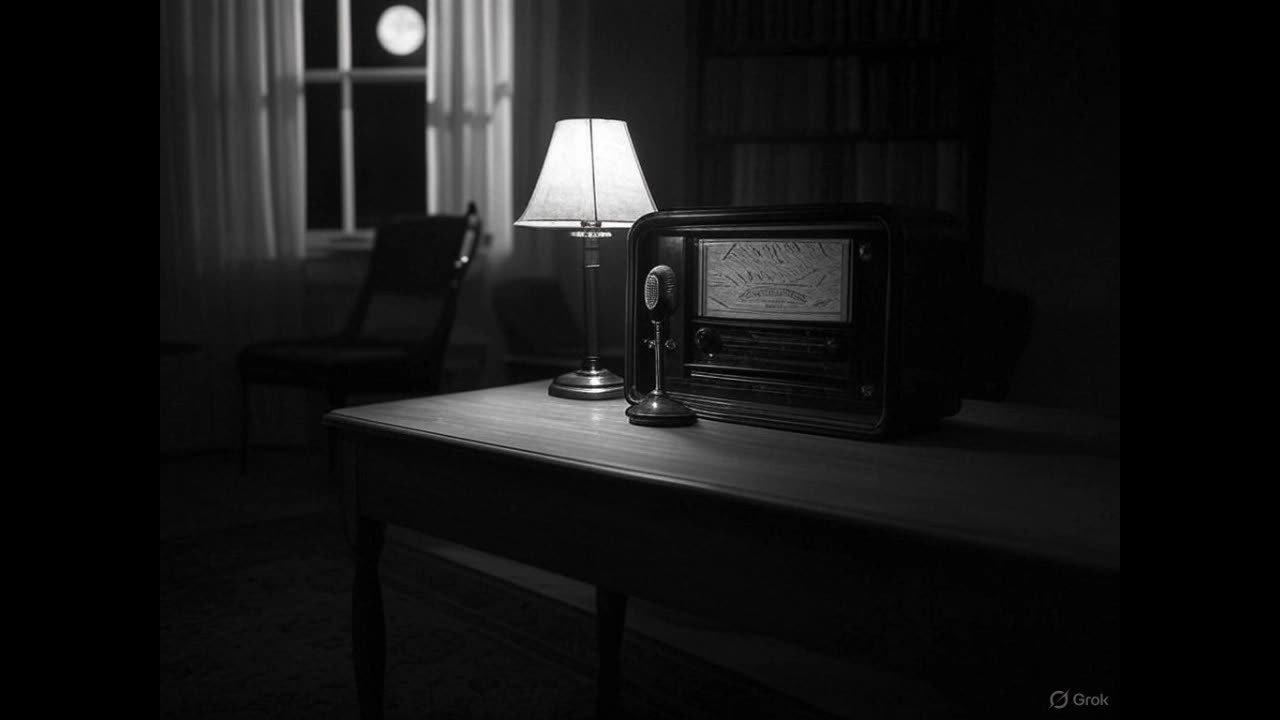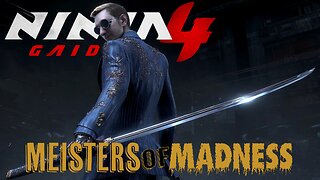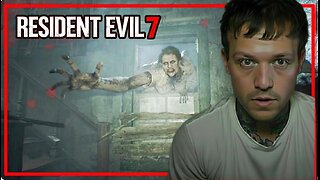Premium Only Content

Lights Out episode titled “Bon Voyage” (November 10, 1942)
Episode: “Bon Voyage” (November 10, 1942)
Cast and Roles
Arch Oboler as Host/Writer/Director: Oboler introduces the episode with his eerie signature line, “It… is… later… than… you… think,” setting a chilling tone. He likely provides narration or minor voice roles, as was common in the 1942–43 CBS revival.
Lead Actor(s) (Unknown, likely ensemble players): Lights Out typically used a small cast of versatile CBS radio actors from New York or Hollywood. The leads are likely a couple or travelers (male and female) on a doomed voyage, given the title. Actors like Mercedes McCambridge, Lou Merrill, or Joseph Kearns, who appeared in other 1942 episodes, are possible but unconfirmed.
Supporting Actors: Additional voices for ship crew, passengers, or supernatural entities, provided by the same actors doubling roles. The focus was on Oboler’s script and sound effects rather than named stars.
CBS Sound Crew: Uncredited but essential, they crafted atmospheric effects like ocean waves, ship creaks, or ghostly sounds, critical to the episode’s horror ambiance.
Note: Exact cast details are unavailable, as Lights Out rarely credited actors in surviving records, and this episode’s documentation is limited. The 1942–43 run, sponsored by Ironized Yeast, relied on Oboler’s vision and CBS’s production quality.
Episode Summary
“Bon Voyage” aired on CBS on November 10, 1942, as part of Arch Oboler’s 1942–43 Lights Out revival, broadcast at 8:00 p.m. ET in a prime-time, family-accessible slot. This 27-minute episode, available on the Internet Archive, is a supernatural horror tale likely centered on a doomed sea voyage, consistent with Oboler’s penchant for psychological dread and atmospheric storytelling. While no detailed synopsis exists in public archives, the title and show format allow for a plausible reconstruction:
Opening: Oboler opens with a tolling bell and his ominous warning, urging nervous listeners to turn off their radios. He introduces the story as a tale of a fateful journey, setting a foreboding mood.
Plot: The story likely follows a couple—perhaps honeymooners, travelers, or wartime evacuees—aboard a ship crossing the ocean. The title “Bon Voyage” suggests a cheerful departure that turns sinister. Strange events unfold: eerie noises, ghostly apparitions, or a sense of impending doom. Sound effects like crashing waves, creaking wood, or distant screams amplify the tension. The ship may encounter a supernatural force (e.g., a ghost ship, sea monster, or cursed fog), or the passengers might face a psychological unraveling, a hallmark of Oboler’s scripts. A female character likely provides emotional depth, while the male lead grapples with the unknown.
Climax and Twist: Oboler’s stories often hinge on a shocking twist. The ship might sink, revealing the passengers were already dead, or the couple could discover they’re trapped in a supernatural loop. Alternatively, the horror might stem from human betrayal, with one character sacrificing the other. The climax likely uses intense sound design to evoke panic or despair.
Resolution: The episode probably ends with Oboler’s narration, offering a cryptic moral about fate, hubris, or the unknown, followed by a jarring shift to a cheerful Ironized Yeast commercial, a common radio contrast. The tone remains unsettling, leaving listeners to ponder the story’s implications.
Tone and Style: The episode blends nautical horror with psychological suspense, using Oboler’s stream-of-consciousness narration and vivid sound effects. It’s less gruesome than earlier Lights Out episodes, reflecting the prime-time slot, but still eerie enough to captivate families.
Note: Without a surviving transcript or detailed summary, the plot is inferred from the title and Oboler’s typical themes (e.g., doomed journeys, supernatural forces). If you’d like me to search for audio or fan discussions on X to refine the summary, let me know!
U.S. News on November 10, 1942
Based on historical records and news archives for November 10, 1942:
Operation Torch Begins: On November 8, 1942, Allied forces launched Operation Torch, the invasion of Vichy French North Africa. By November 10, U.S. newspapers like The New York Times reported early successes in Morocco and Algeria, with General Dwight D. Eisenhower leading the campaign. This boosted morale as a major U.S. offensive in World War II.
Midterm Election Fallout: The November 3 midterm elections saw Republican gains in Congress. On November 10, headlines analyzed the results, noting voter discontent with wartime rationing and President Franklin D. Roosevelt’s policies, though Democrats held majorities.
Rationing Tightens: Coffee rationing began on November 9, limiting Americans to one pound every five weeks. On November 10, reports highlighted public grumbling over shortages of coffee, sugar, and gas, with the Office of Price Administration urging sacrifice for the war effort.
War Bond Drives: Nationwide campaigns pushed war bonds to fund the military. On November 10, radio and newspapers featured celebrities like Bob Hope promoting bonds, tying into the era’s patriotic fervor.
These events reflected a nation fully committed to World War II, with radio shows like Lights Out offering a brief escape from war-related anxieties.
International News on November 10, 1942
Operation Torch in North Africa: The Allied invasion of North Africa dominated global news. On November 10, international reports detailed U.S. and British landings in Casablanca, Oran, and Algiers, with Vichy French forces offering mixed resistance. This marked a turning point in the Western theater of World War II.
Battle of Stalingrad: The Soviet Union’s defense of Stalingrad against German forces intensified. On November 10, dispatches reported brutal urban combat and Soviet resilience, foreshadowing the Red Army’s counteroffensive later in November.
Guadalcanal Campaign: In the Pacific, U* Guadalcanal Campaign: In the Pacific, U.S. Marines and Japanese forces clashed in the Solomon Islands. On November 10, news reported the Naval Battle of Guadalcanal (November 12–15 looming), a critical Allied effort to secure the island, gripping global attention.
Holocaust Reports: Though not widely publicized, November 1942 saw early Allied confirmation of Nazi death camps. On November 10, diplomatic channels discussed Jewish deportations, but public awareness remained limited, overshadowed by military news.
These global events underscored a world engulfed in war, with Lights Out providing a chilling diversion from relentless battle reports.
Cultural Impact, If Any
The episode “Bon Voyage” had limited direct cultural impact as a single broadcast in the 1942–43 Lights Out revival, but its context and style contributed to broader cultural trends:
Nautical Horror Appeal: The episode’s likely focus on a doomed sea voyage tapped into wartime fears of U-boat attacks and ocean perils, as the Battle of the Atlantic raged in 1942. Its supernatural twist offered a safe way to process real-world anxieties, resonating with listeners facing wartime uncertainty.
Oboler’s Radio Legacy: Arch Oboler’s innovative use of sound effects and psychological horror in “Bon Voyage” reinforced Lights Out’s reputation as a pioneer of radio drama. His techniques influenced later horror shows like Suspense and modern audio storytelling, including podcasts like Welcome to Night Vale.
Wartime Escapism: Airing during World War II’s darkest months, the episode provided a thrilling escape for families gathered around radios. Its prime-time slot broadened its reach, making horror accessible to a wider audience than the show’s earlier midnight runs, though less shocking to suit the slot.
Ephemeral Nature: As a lesser-known episode, “Bon Voyage” lacks the fame of Lights Out classics like “Chicken Heart.” Its survival in archives ensures niche appeal among old-time radio enthusiasts, but it didn’t inspire specific adaptations or cultural references. Its significance lies in sustaining the series’ wartime relevance.
-
 7:22:09
7:22:09
Meisters of Madness
9 hours agoOmega Gaiden - Part 4
34.7K1 -
 2:51:18
2:51:18
Barry Cunningham
9 hours agoBREAKING NEWS: NATIONAL GUARD ATTACK PRESS CONFERENCE AND LIVE UPDATES!
82.5K52 -
 LIVE
LIVE
SilverFox
5 hours ago🔴LIVE - ARC AT NIGHT! COME THRU!
480 watching -
 2:46:09
2:46:09
Joker Effect
5 hours agoCLAVICULAR - What the hell is "Looks Maxing"? Asmond Gold is a Demon. KaceyTron. Steve Will do it.
38.8K3 -
 3:31:22
3:31:22
SlingerGames
5 hours agoLIVE - Wumble Wednesday - BIRTHDAY STREAM!
16.5K3 -
 LIVE
LIVE
StevieTLIVE
5 hours agoWarzone Win Streaking BIG Challenges MASSIVE Hype NO Losses LOCK IN
72 watching -
 5:33:40
5:33:40
FrizzleMcDizzle
7 hours agoThis game is scary AF - RESIDENT EVIL 7
8.09K -
 1:03:47
1:03:47
TheCrucible
9 hours agoThe Extravaganza! EP: 66 (11/25/25)
97.1K15 -
 4:23:35
4:23:35
xxTOWERDOGxx
8 hours ago🦃Wobble Wobble, while you Gobble Gobble 🦃🟢Premium Creator🟢🪒No Shave November🪒
3.94K -
 2:02:38
2:02:38
Blabs Life
8 hours agoPART 4: Peter Jackson's King Kong: The Official Game of the Movie | Noob Plays
20.9K1